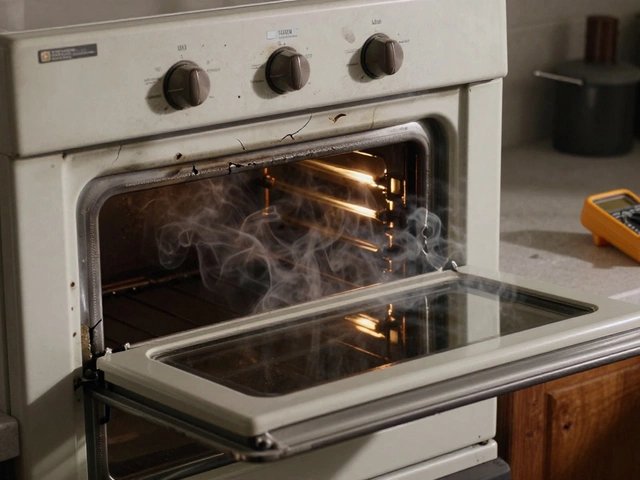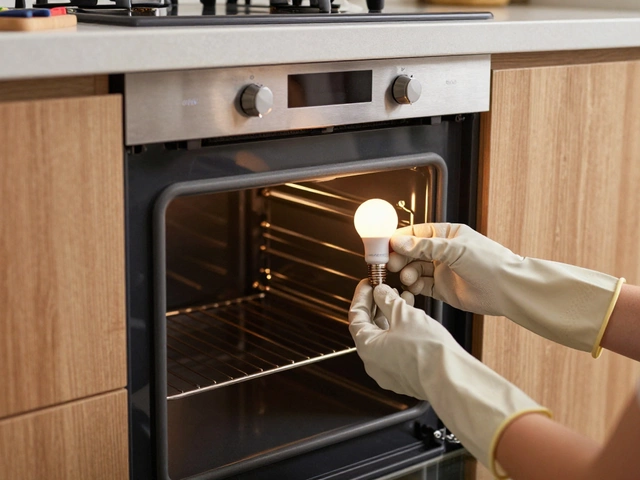Oven Care: Easy Steps to Keep Your Oven Working Like New
That yummy roast you’ve been planning? It can turn into a disaster if your oven decides to quit on you. The good news? Most oven problems are preventable with a little regular care. Below you’ll find straight‑forward habits that keep the heat steady, the controls responsive, and the bills low.
Every‑day cleaning that protects the heat source
Spills happen. When food drips onto the bottom of an electric oven, the heating elements can get coated with greasy residue. After each use, let the oven cool and wipe the floor with a damp cloth. For stubborn baked‑on messes, sprinkle baking soda and a splash of water, let it sit for 15 minutes, then scrub gently. This routine stops the build‑up that forces the thermostat to work harder and can cause uneven temperatures.
Monthly checks that spot trouble early
Take a quick look at the door seal once a month. A cracked or warped gasket lets heat escape, meaning the oven runs longer and uses more electricity. If you feel a cold draft when the oven is on, the seal probably needs replacing. While you’re there, inspect the oven racks for rust. Rusted racks can melt onto the floor during high‑heat cooking, creating a mess and a fire risk. Give them a quick polish with a kitchen scrubber or replace them if the damage is severe.
Next, test the temperature accuracy. Place an oven‑safe thermometer on the middle rack, set the oven to 180°C (350°F), and compare the reading after 10 minutes. If it’s off by more than 10°, the thermostat may need calibration or replacement. Most modern ovens have a simple adjustment screw; consult the manual, or give a local repair service a call.
Don’t forget the self‑cleaning cycle if your oven has one. Run it once a year, but empty the oven first—no pots, pans, or foil. The high heat burns away grime, leaving a smooth interior. After the cycle, wipe away any ash residue before the next use.
When the oven makes odd noises—buzzing, clicking, or a continuous beep—listen closely. A humming sound often signals a faulty heating element, while repeated beeps can mean a sensor is failing. These issues are usually inexpensive to fix, but ignoring them can lead to bigger, costlier repairs.
Finally, keep the control panel dry. Spills near the knobs or touchpad can cause short circuits. If you notice the lights flickering or buttons sticking, unplug the oven and let it dry completely. A soft brush can help clear any leftover moisture from crevices.
By adding these quick checks to your routine, you’ll extend your oven’s life, save on energy bills, and avoid the panic of an unexpected break‑down. If you ever hit a snag you can’t solve, a qualified technician can handle element swaps, thermostat calibrations, or control board replacements—often at a fraction of the cost of a brand‑new oven.
Remember, a well‑maintained oven isn’t just about cooking; it’s about keeping your kitchen safe and your wallet happy. Stick to these simple habits and your oven will thank you with years of reliable performance.
23 January 2025
·
0 Comments
Discover the typical lifespan of ovens and learn how to extend it through proper maintenance and timely repairs. This guide provides insights into the factors that influence how long an oven can last, common issues to look out for, and practical tips for keeping your oven in good working order. Understand the signs that indicate it's time to consider a repair or replacement, and make informed decisions about your kitchen appliances.
Read more






